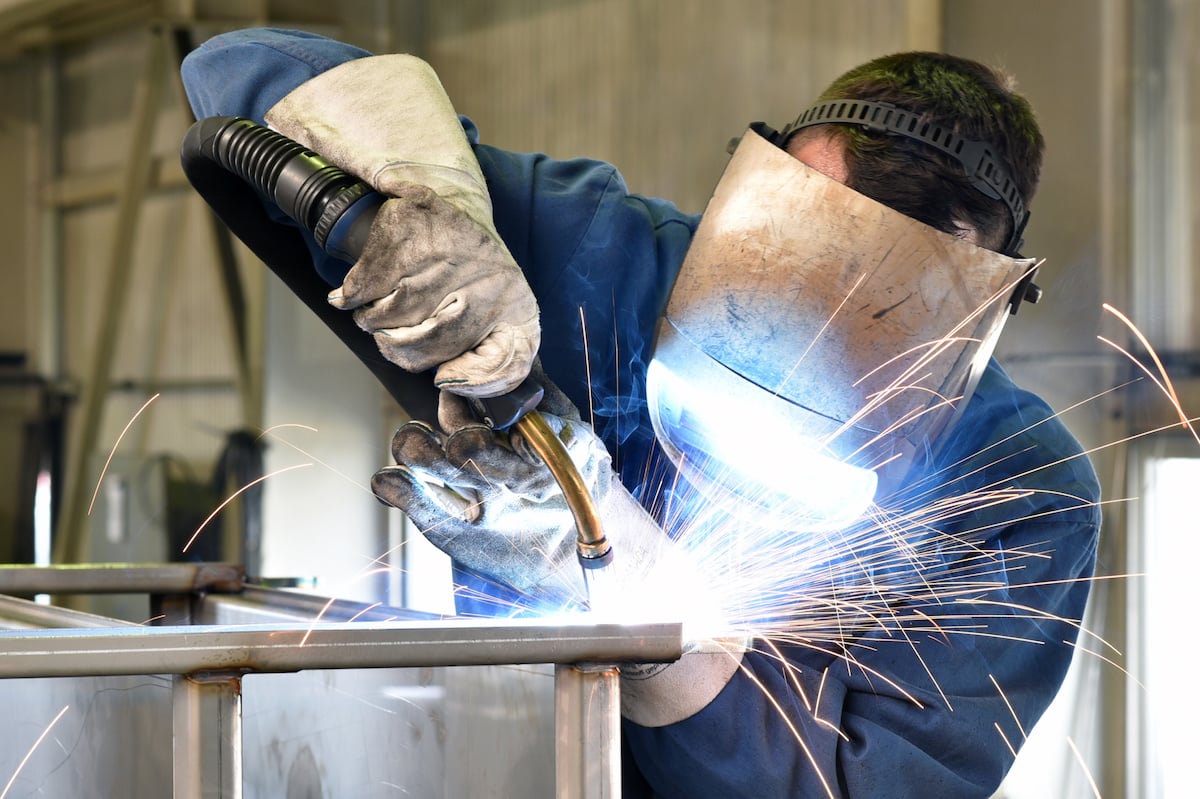The Value of Welding WPS: Making Sure Top Quality and Safety And Security in Your Tasks
The Value of Welding WPS: Making Sure Top Quality and Safety And Security in Your Tasks
Blog Article
Unlocking the Power of Welding WPS: Strategies for Performance and Safety in Manufacture
In the world of fabrication, Welding Treatment Specs (WPS) stand as the backbone of welding operations, dictating the essential steps for achieving both efficiency and security in the manufacture process. Comprehending the complexities of WPS is critical to utilizing its complete possibility, yet numerous companies struggle to unlock real power that exists within these papers (welding WPS). By delving right into the techniques that optimize welding WPS, a world of boosted performance and increased safety awaits those happy to check out the nuances of this important aspect of fabrication

Significance of Welding WPS
The relevance of Welding Procedure Specs (WPS) in the manufacture industry can not be overemphasized. WPS work as an essential roadmap that describes the essential steps to ensure welds are done consistently and appropriately. By defining crucial parameters such as welding processes, products, joint styles, preheat temperatures, interpass temperatures, filler metals, and post-weld heat therapy requirements, WPS supply a standard strategy to welding that enhances effectiveness, high quality, and safety and security in manufacture procedures.
Adherence to WPS assists in accomplishing uniformity in weld top quality, decreasing the chance of problems or structural failures. This standardization also promotes compliance with industry laws and codes, making certain that made frameworks meet the needed safety and security requirements. Moreover, WPS documents makes it possible for welders to replicate successful welding treatments, resulting in regular results throughout various projects.
Basically, the meticulous advancement and rigorous adherence to Welding Treatment Specifications are extremely important for maintaining the integrity of bonded structures, securing against potential threats, and supporting the reputation of manufacture firms for providing top quality services and products.
Crucial Element of Welding WPS

Enhancing Efficiency With WPS
When enhancing welding procedures, leveraging the crucial elements outlined in Welding Procedure Specs (WPS) ends up being crucial for making best use of and streamlining processes productivity. One way to enhance efficiency with WPS is by carefully selecting the appropriate welding parameters. By adhering to the specific standards given in the WPS, welders can ensure that the welding tools is established appropriately, bring about high-grade and regular welds. In addition, complying with the pre-approved welding series described in the WPS can substantially minimize the time spent on each weld, ultimately raising total efficiency.
In addition, appropriate training and accreditation of welders in understanding and carrying out WPS can further enhance effectiveness. Ensuring that all employee are fluent in translating and performing the WPS accurately can minimize errors and rework, conserving both time and resources. Frequently assessing and upgrading the WPS to include any kind of lessons discovered or technological developments can additionally add to efficiency improvements in welding procedures. By embracing the standards stated in the WPS and continually seeking methods to optimize procedures, makers can attain greater efficiency levels and premium outcome.
Ensuring Safety in Fabrication

Making sure safety and security in construction involves a complex technique that includes numerous facets of the welding process. Welders must be equipped with proper Recommended Reading equipment such as safety helmets, gloves, and protective clothing to reduce dangers connected with welding activities.
Additionally, adherence to correct air flow and fume extraction systems is vital in keeping a healthy job environment. Welding fumes include unsafe materials that, if inhaled, can posture major health and wellness risks. Implementing reliable air flow actions aids to lessen exposure to these dangerous fumes, advertising respiratory system wellness among employees.
Routine tools upkeep and examinations are likewise vital for guaranteeing safety in fabrication. Damaged equipment can cause crashes and injuries, highlighting the value of routine checks and timely fixings. By focusing on security procedures and cultivating a culture of recognition, fabrication centers can produce a efficient and home secure workplace for their personnel.
Carrying Out WPS Best Practices
To enhance operational efficiency and ensure quality results in fabrication procedures, incorporating Welding Procedure Spec (WPS) ideal practices is extremely important. Choosing the appropriate welding procedure, filler material, and preheat temperature defined in the WPS is essential for attaining the wanted weld top quality. Making sure that qualified welders with the essential qualifications carry out the welding treatments according to the WPS guidelines is necessary for consistency and dependability.
Verdict
In conclusion, welding WPS plays a critical function in guaranteeing effectiveness and safety in construction procedures. By following these methods, services can unlock the full potential of welding WPS in their fabrication operations.
In the world of manufacture, Welding Procedure Specifications (WPS) stand as the backbone of welding procedures, dictating the required steps for attaining both performance and safety and security in the fabrication process. By specifying essential parameters such as welding processes, materials, joint designs, preheat temperatures, interpass temperatures, filler steels, and post-weld heat treatment requirements, WPS supply a standardized technique to welding that boosts efficiency, high quality, and security in fabrication procedures.

When enhancing welding operations, leveraging the vital aspects laid out in Welding Procedure Requirements (WPS) becomes important for making best use of and improving procedures performance. (welding WPS)
Report this page